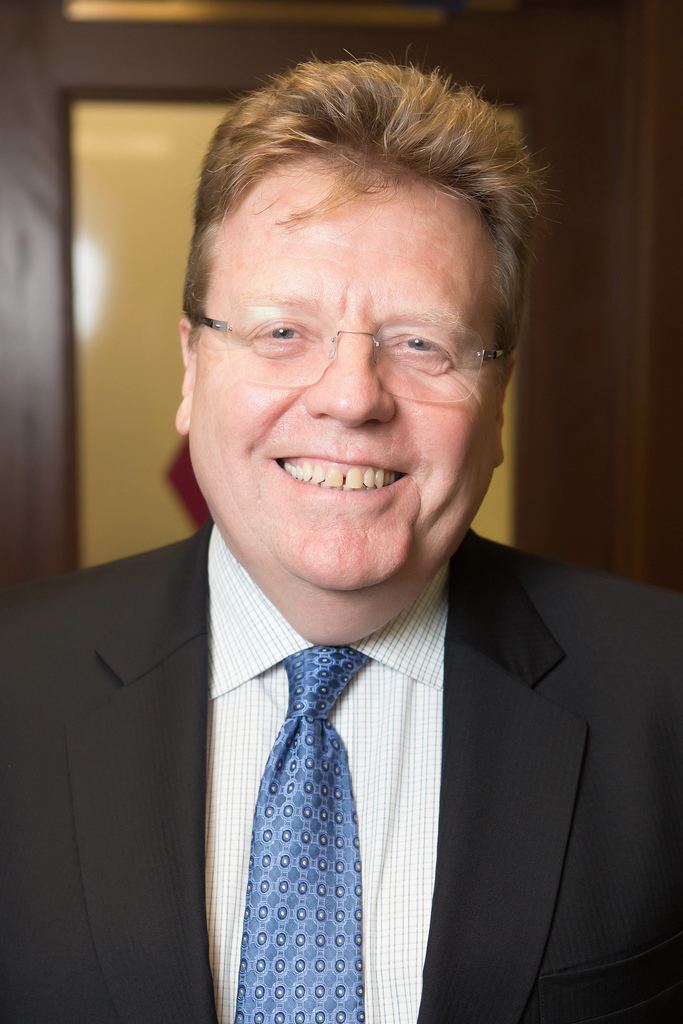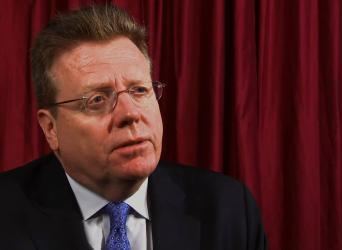Awards Guggenheim Fellowship for Natural Sciences, US & Canada Fields Chemical Engineering, Biomolecular engineering, Nanotechnology Similar Danielle Tullman‑Ercek, Daniel A Fletcher, Seung‑Wuk Lee, Jeremy Thorner | ||
Matthew tirrell founding pritzker director institute for molecular engineering
Matthew Tirrell (born 5 September 1950) is an American chemical engineer. In 2011 he became the Founding Pritzker Director and Dean of the Institute for Molecular Engineering (IME) at the University of Chicago, in addition to serving as the Deputy Laboratory Director for Science at Argonne National Laboratory. Tirrell's research specializes in the manipulation and measurement of polymer surface properties.
Contents
- Matthew tirrell founding pritzker director institute for molecular engineering
- Matthew tirrell on nanoparticles that target diseases without symptoms
- Childhood and education
- Career
- Research
- Awards and Honors
- References

Matthew tirrell on nanoparticles that target diseases without symptoms
Childhood and education

Tirrell was born in Phillipsburg, New Jersey on September 5, 1950. He received a bachelor's degree in Chemical Engineering (B.S. Ch.E.) in 1973 Northwestern University, and a Ph.D. in 1977 from University of Massachusetts Amherst in Polymer Science and Engineering under Stanley Middleman.
Career

In 1977, Tirrell became an assistant professor in the Department of Chemical Engineering and Materials Science at the University of Minnesota, serving as the head of the department from 1995 to 1999. In 1999, he moved to the University of California, Santa Barbara, where was Richard A. Auhll Professor and Dean of the College of Engineering. In 2009, he moved to the University of California, Berkeley as Arnold and Barbara Silverman Professor and Chair of the Department of Bioengineering, as well as a Professor of Materials Science and Engineering and Chemical Engineering and a Faculty Scientist in the Materials Science Division at Lawrence Berkeley National Laboratory.

In 2011, Tirrell became the Founding Pritzker Director and Dean of the Institute for Molecular Engineering (IME) at the University of Chicago. In 2015, he was appointed as the Deputy Laboratory Director for Science at Argonne National Laboratory.
Research

The early work in Tirrell's career focused on the behavior of macromolecules in physically confined spaces, in which both the structure and motion of the macromolecule are constrained and distorted by the confining boundaries. For example, the apparent viscosity of a macromolecular solution can be lower because the centers-of-mass of the macromolecules cannot get close to the wall, giving rise to a low viscosity depletion layer (a similar phenomenon occurs, albeit at larger scales, in blood flow in narrow vessels). Tirrell was responsible for developing a quantitative, predictive theoretical picture of this type of phenomenon and comparing it with experimental rheological results. His papers describing this research have collectively been cited more than 600 times.
Tirrell's interest in polymer confinement led to the investigation of what happens when polymers stick (adhere, adsorb) to the walls confining them. His research group became especially interested in a prediction made in the late 1970s by Pierre-Gilles de Gennes, about the situation where a polymer molecule is tethered by its end to a surface but no other segments were attracted to the surface, a situation that has become known as a polymer brush. De Gennes predicted that a dense layer of such end-tethered chains would result in the chains stretching out normal to the tethering surface to a high degree, resulting in a surface that is resistant to adhesion and has very low friction. Tirrell conceived and implemented the first experimental system to test these predictions by adsorbing block copolymers, and demonstrated the theoretically anticipated stretching and long-range repulsion. His interest in this field, amassing more than 1500 citations, continues today, especially in the area of charged polymer brushes which are bio-medically relevant in situations such as mucosal and cartilage surfaces.
Eventually, Tirrell's work on block copolymers led him to starting research in the field of peptide amphiphiles. In the field of tissue engineering, in the early 1990s, the idea of adding ingredients, such as cell adhesion peptides (e.g., RGD) to surfaces and matrices was being developed. Tirrell realized that the majority of the ways that such molecules were being presented was very haphazard and uncontrolled. His research group began to explore the idea of conjugating peptides to lipids in order to use the self-assembly character of lipids to direct a controlled presentation of peptides. This has led to current work in peptide amphiphile micelles, which are versatile, modular, biofunctional nanoparticles that can be injected into the circulation to target, image and, in some cases, treat pathological conditions. The Tirrell group has active work now in using such particles to diagnose and treat atherosclerosis, and also to stimulate the adaptive immune system to generate desired B-cell and T-cell responses.
The other principal area of Tirrell's current work, in addition to peptide amphiphiles, is in the generation of new materials and functional assemblies via polyelectrolyte complexation. Under the right conditions, oppositely charged polyelectrolyte chains can assemble into flexible, fluid complexes. Such fluids (sometimes known as coacervates) have very low interfacial tension with water so they are very useful as encapsulants and also as agents to drive self-assembly in aqueous systems. Tirrell's research group has been exploring these materials and assemblies in a variety of biomedical applications such as micelle formation, encapsulation and hydrogel formation.
